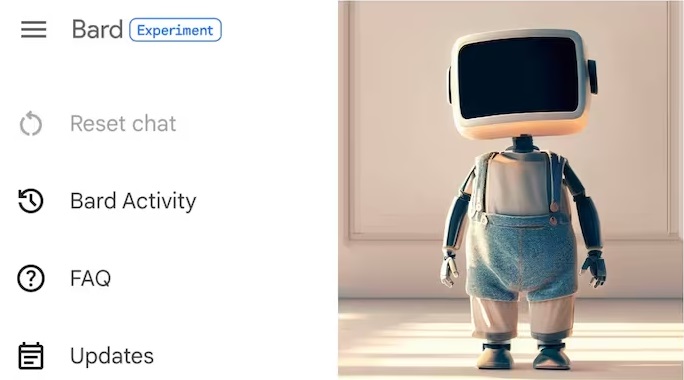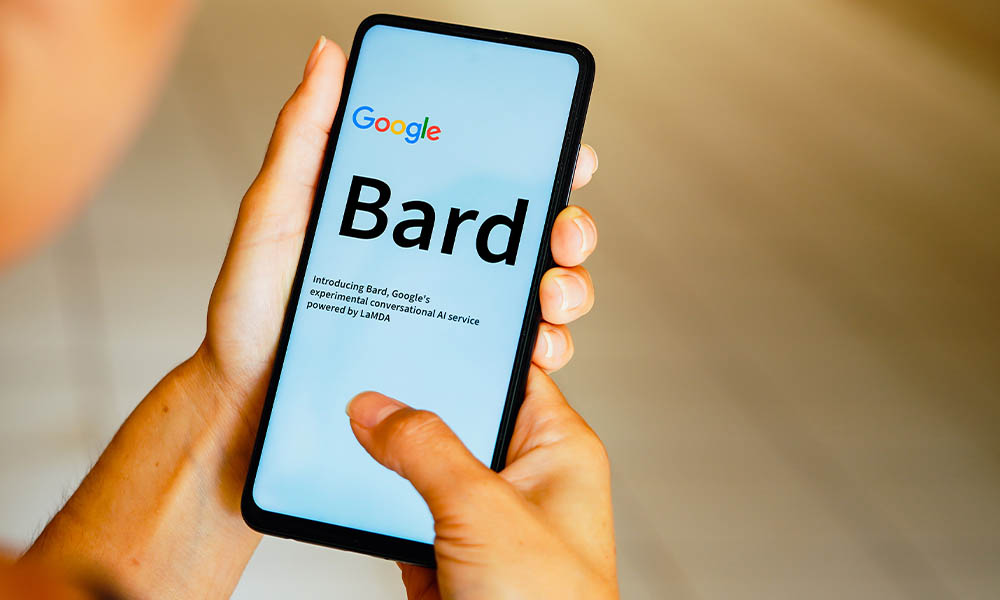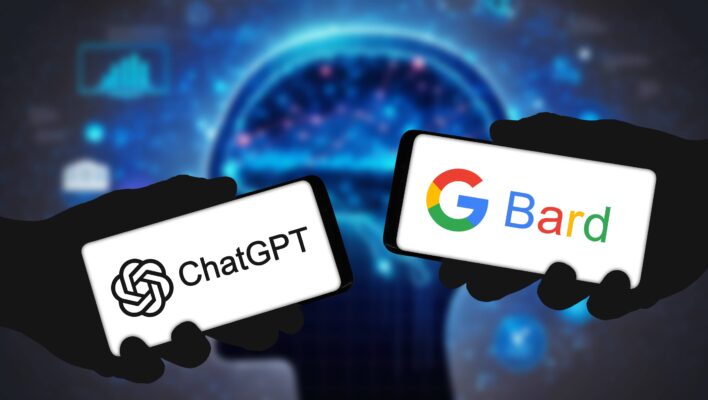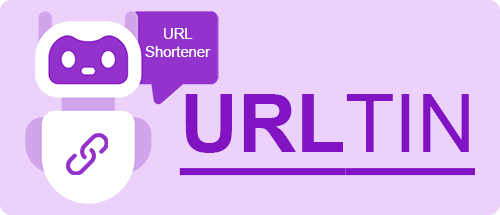In recent times, the ascent of artificial intelligence (AI) has been truly extraordinary, firmly establishing itself as a game-changing force across various industries. In 2022 alone, it generated an estimated revenue of $86.9 billion.
Among the intriguing innovations within the realm of AI, one standout creation shines particularly bright: Google Bard AI. This remarkable creation not only showcases the astounding potential of AI but also invites users to embark on a journey where human imagination converges with the limitless capabilities of technology. Explore the captivating world of Google Bard AI and gain a clearer insight into its functioning.
What is Google Bard?
Google Bard represents a significant leap in language technology, building upon the powerful Bidirectional Encoder Representations from Transformers (BERT) model. BERT is renowned for its contextual understanding of language, and Google Bard takes this a step further. It can be likened to a turbocharged version, capable of handling intricate tasks.
Imagine posing a question to your voice assistant in a natural conversational manner. This is where Google Bard excels. It adeptly comprehends the words you use and the nuances in how you deliver them. This proficiency greatly enhances the accuracy and utility of voice searches.
Have you ever formulated a detailed question? These are known as long-tail queries. Google Bard shines in this arena as well. It can sift through lengthy sentences and precisely discern the query’s intent, providing spot-on responses.
In essence, Google Bard functions as a highly intelligent language wizard of AI, making interactions with computers feel more seamless and akin to chatting with a human. This innovation is fundamentally altering how individuals communicate with their devices and obtain information.
Essential Components of Google Bard AI

The architecture of Google Bard AI comprises several crucial components that synergistically contribute to its exceptional performance in understanding natural language. These components enable the model to excel in comprehending the context, subtleties, and intricacies of human language.
Bidirectional Processing: At the heart of Google Bard’s prowess lies its utilization of bidirectional processing. Unlike conventional models that process language in a single direction, Google Bard employs both forward and backward passes. This enables it to capture the relationships between words more effectively, leading to a richer understanding of context. For instance, it can distinguish between “let him go” and “go let him.”
Attention Mechanisms: Another integral facet of Google Bard’s architecture is the attention mechanism. This mechanism allows the model to assign varying degrees of importance to different segments of a sentence while considering the entire context. By doing so, Google Bard can prioritize significant words and phrases, accounting for their relevance in the overall meaning.
Contextual Embeddings: Google Bard employs contextual embeddings, which are representations of words incorporating contextual information. These embeddings capture a word’s meaning based on the surrounding terms, ensuring that words with multiple meanings are interpreted accurately within the given context. This empowers Google Bard to better comprehend a sentence’s overarching purpose, leading to more precise interpretations.
Advantages of Google BARD AI
Google Bard AI brings forth remarkable advantages through its advanced language comprehension capabilities. Here are some standout features:
Enhanced Contextual Understanding
Thanks to bidirectional processing and attention mechanisms, Google Bard comprehends the intricacies and context of language. This enables it to accurately grasp your intended meaning, even in complex queries or when you employ ambiguous phrases.
Accurate Voice Searches
Google Bard excels in understanding natural speech patterns. It shines in providing accurate responses during voice searches. Its ability to grasp the nuances of spoken language enhances the reliability of voice assistants, elevating the overall user experience.
Precision in Long-tail Queries
When users input detailed or extensive queries, Google Bard’s contextual embeddings come to the forefront. It captures the precise intent behind these queries, offering accurate answers that align with the user’s requirements.
Improved Search Relevance
Google Bard enhances the capability of search engines to deliver relevant outcomes. It comprehends context, eliminating the confusion stemming from polysemy (multiple word meanings) and ensuring users receive information tailored to their intended context.
Personalized Content Generation
The model’s contextual understanding empowers it to generate content that’s contextually relevant. This capacity can be harnessed for personalized recommendations, content summaries, and creative writing.
When was Google Bard introduced?

Google Bard was officially unveiled on February 6, 2023, by Sundar Pichai, the CEO of Google and Alphabet. This marked the introduction of Google Bard AI, a wholly new concept.
The foundational technology behind the AI chat service associated with Google Bard is Google’s Language Model for Dialogue Applications (LaMDA). LaMDA was revealed two years earlier, showcasing Google’s progressive approach to developing language technology.
By leveraging the advancements of LaMDA, Google Bard creates a fresh dimension of AI-driven conversation, interaction, and comprehension. It opens the door to exciting possibilities in natural language understanding and engagement.
What is the Purpose of Google Bard?
Thanks to its advanced language understanding capabilities, Google Bard finds utility across a spectrum of domains.
Enhancing Search Engines
Google Bard elevates the capacity of search engines to understand intricate queries, delivering outcomes that are more accurate and contextually relevant. This becomes particularly crucial for ambiguous search terms where context plays a pivotal role.
Voice Assistants
In the realm of voice searches and interactions, Google Bard accurately interprets nuances in spoken language. This empowers voice assistants to offer precise and pertinent responses, thereby enhancing the user experience.
Tasks in Natural Language Processing (NLP)
Google Bard’s bidirectional processing and contextual comprehension equip it to excel in various NLP tasks such as sentiment analysis, text classification, and named entity recognition. This aids in automating language-related tasks.
Content Generation
Drawing on its contextual embeddings, Google Bard has the capability to generate content that is contextually pertinent, including personalized recommendations, summaries, and creative writing. This streamlines the content creation process.
Conversational AI
The robust comprehension abilities of Google Bard play a pivotal role in the development of advanced chatbots and conversational agents. This facilitates more natural and intuitive interactions between humans and machines.
Is Google Bard Available for Free?
Indeed, Google Bard is accessible as a free service. Users can access Google’s conversational AI capabilities without incurring any costs. Simply sign up for or log in to your Google account to begin using Google Bard. This approach underscores Google’s commitment to fostering widespread adoption and exploration of its innovative AI technologies. By removing financial barriers, Google encourages users to enjoy and benefit from the enhanced language understanding and conversational capabilities of Google Bard.
Is Google Bard Superior to ChatGPT?

When comparing Google Bard and ChatGPT, it’s imperative to consider their distinctive strengths and focuses. Google Bard is engineered to excel in understanding natural language. Leveraging bidirectional processing and contextual embeddings, it adeptly interprets intricate queries, improves voice searches, and augments search relevance. Its particular value lies in applications such as voice assistants, search engines, and content generation.
Conversely, ChatGPT is renowned for generating text that emulates human language and engaging in versatile conversations spanning a wide array of topics. It is designed to function as a conversational partner and a source of creative content, rendering it well-suited for content creation, brainstorming, and interactive dialogue tasks.
Ultimately, the choice between Google Bard and ChatGPT hinges on the specific application at hand. If language understanding and query interpretation take precedence, Google Bard is a formidable contender. For engaging and creative conversations, ChatGPT remains the preferred choice. Both technologies represent significant advancements in AI, catering to different facets of human-computer interaction.
How Does Google Bard Operate?
Users can access Google Bard by signing up for or logging into a Google account. Upon logging in, they can directly engage with the conversational AI service. Users input their queries, encompassing both voice-based searches and text-based questions. Google Bard then deploys its language comprehension capabilities to furnish accurate, contextually pertinent responses. This creates a seamless and intuitive interaction between users and AI-driven language understanding.
Who Has Access to Google Bard?
Google Bard is open to anyone possessing a Google account. This implies that users from diverse cultures and backgrounds around the world can harness the capabilities of AI-driven language understanding. In this manner, Google Bard transcends the conventional barriers of language and comprehension, bridging the gap between humans and machines.
Does Google Bard Include Visuals in Its Responses?
Yes, Google Bard is equipped to provide images in its responses. When users input queries related to images, Google searches its extensive image database to furnish relevant content. For instance, if you inquire, “What does a golden retriever look like?” Google Bard responds by presenting images of the breed.
Is Google Bard Secure?
Google places a strong emphasis on security and privacy. Google Bard is designed to adhere to the highest data protection standards, featuring robust authentication measures and encryption protocols. Furthermore, it complies with all relevant data security regulations, including the General Data Protection Regulation (GDPR) in the European Union.
Challenges and Constraints of Google BARD
Google Bard represents a remarkable stride forward in natural language understanding and human-computer interaction. Nevertheless, it is not without its imperfections. The technology grapples with certain challenges and limitations.
Limited Domain Understanding
While Google Bard is proficient in general conversation encompassing a broad spectrum of topics, its understanding of specific domains remains limited. It struggles to grasp specialized, technical terminology that necessitates a deeper domain-specific knowledge.
Learning Curve
For novice users, a learning curve is involved in interacting with Google Bard. While the AI comprehends conversational language adeptly, it may falter with more intricate queries. Users need to grasp the model’s capabilities and limitations, as well as formulate questions correctly.
Limited Precision
Despite its adeptness at deciphering natural language patterns, Google Bard may not pinpoint every nuance in a query. It tends to exhibit lower accuracy in complex queries rife with variables or in instances where words bear multiple meanings within the same context.
Future Implications and Evolution
Google Bard is poised to revolutionize human-computer interaction through its advanced language comprehension capabilities. In the coming years, it will continue to evolve and further refine its understanding of language and conversational AI performance. Several potential developments lie ahead:
Augmented Domain Understanding
To accommodate specialized conversations, Google Bard will likely expand its grasp of specific domains. This advancement would enable it to better comprehend technical phrases and terminology, broadening its applicability for in-depth discussions.
Enhanced Accuracy
As Google Bard matures, its accuracy is expected to heighten. With improvements in language models, the AI will fine-tune its ability to interpret complex queries more precisely, leading to more satisfying outcomes for users.
Expanded Usage
As Google Bard evolves, additional industries and applications will discover utility in its language comprehension capabilities. It can be harnessed for tasks in natural language processing, content generation, automated customer service processes, and interactive dialogue systems.
Google Bard has traversed a significant portion of its journey toward excellence in AI-driven language comprehension, and the future appears even more promising. It’s merely a matter of time until its capabilities attain refinement, enabling individuals to enjoy unparalleled levels of natural language interaction and understanding.
FAQ: Unveiling Google Bard: A New Era in Language Understanding and AI Interaction
What is Google Bard AI?
Google Bard AI is a revolutionary advancement in language technology that builds upon the powerful BERT (Bidirectional Encoder Representations from Transformers) model. It excels at understanding context in language, enhancing voice searches, and transforming human-computer interaction.
How does Google Bard work?
Google Bard employs bidirectional processing, attention mechanisms, and contextual embeddings to understand the context, nuances, and complexities of human language. It’s capable of accurately interpreting queries, whether they’re voice-based or text-based, and generating relevant responses.
What are the key components of Google Bard AI?
The key components of Google Bard AI include bidirectional processing, attention mechanisms, and contextual embeddings. These components synergistically contribute to its exceptional performance in language comprehension and understanding.
What are the benefits of Google Bard AI?
Google Bard AI offers enhanced contextual understanding, accurate voice searches, precision in handling complex queries, improved search relevance, and personalized content generation. Its capabilities are poised to transform how we interact with technology.
How does Google Bard compare to ChatGPT?
Google Bard excels in language understanding, voice searches, and enhancing search engines. On the other hand, ChatGPT is designed for creative content generation and versatile conversations. The choice between the two depends on the specific application you have in mind.
How can I access Google Bard AI?
Google Bard AI is available for free to anyone with a Google account. Simply sign up or log in to your Google account to start using Google Bard’s conversational AI capabilities.
What are some potential future developments for Google Bard AI?
In the future, Google Bard AI is likely to see improvements in domain understanding, accuracy, and expanded usage across various industries and applications. These developments will continue to shape the landscape of natural language interaction.
Is Google Bard secure to use?
Yes, Google Bard prioritizes security and privacy. It adheres to robust data protection measures, encryption protocols, and complies with relevant data security regulations.
What are the challenges and limitations of Google Bard AI?
While Google Bard is a significant advancement, it faces challenges such as limited domain understanding, a learning curve for users, and occasional limitations in pinpointing nuances in complex queries.
How was Google Bard introduced and when?
Google Bard was officially introduced on February 6, 2023, by Google and Alphabet CEO Sundar Pichai. It’s built upon Google’s Language Model for Dialogue Applications (LaMDA), showcasing Google’s progressive approach to language technology development.
How does Google Bard handle visual content?
Google Bard can include images in its responses. When users ask image-related queries, Google Bard searches its image database and provides relevant visuals as part of its answers.
Can Google Bard be used in specialized domains?
While Google Bard excels in general conversations, its understanding of specialized domains remains limited. It may not accurately interpret highly technical terminology that requires specialized domain knowledge.
Is Google Bard suitable for content generation?
Yes, Google Bard’s contextual understanding capabilities make it suitable for content generation, including personalized recommendations, content summaries, and creative writing.
In Conclusion
Google Bard constitutes a remarkable breakthrough in AI-powered language comprehension. It has the potential to redefine human-computer interaction, spanning voice searches, natural language processing, and interactive dialogue systems. By virtue of its contextual understanding and bidirectional processing, Google Bard adeptly deciphers intricate queries and produces pertinent content. It’s offered as a free service to all Google account holders, making advanced AI language capabilities accessible to a wide audience. As technology advances, users can anticipate heightened accuracy and a deeper appreciation of various domains, ushering in a new era of natural language interactions.
URLTin
Discover the power of concise links! Simplify your URLs and enhance user experience by visiting our page for the ultimate URL shortener solution.

